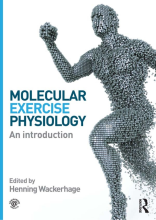Mechanisms for Stress Robustness Produced by Physical Activity: CX3CL1-CX3CR1 Axis Modulation
5 important questions on Mechanisms for Stress Robustness Produced by Physical Activity: CX3CL1-CX3CR1 Axis Modulation
What could be the molecular signature of stress robustness produced by physical activity in modulating the CX3CL1-CX3CR1 Axis?
What is the found effect of uncontrollable stress on the CX3CL1-CX3CR1 axis?
What do they conclude about US exposure to sedentary rats?
- Decreased BDNF production mediated by 5-HT stimulation
- Increased motility by 5-HT stimulation
- Increased production of cytokines by NE activity
- Persistent CX3CR1 mRNA downregulation
- Higher grades + faster learning
- Never study anything twice
- 100% sure, 100% understanding
What do they conclude about US exposure to physical active rats?
- no excessive 5-HT and NE responses
- less to no BDNF reductions
- less motility increases
- controlled production of inflammatory cytokines
- rapid recovery of CX3CR1 mRNA expression in microglia
Are their results regarding CX3CR1 recovery strong?
The question on the page originate from the summary of the following study material:
- A unique study and practice tool
- Never study anything twice again
- Get the grades you hope for
- 100% sure, 100% understanding































